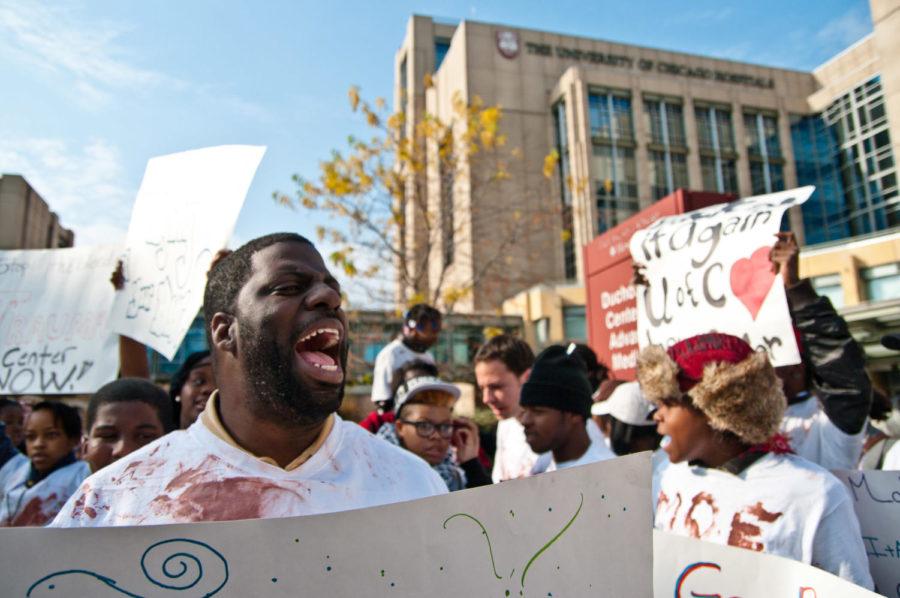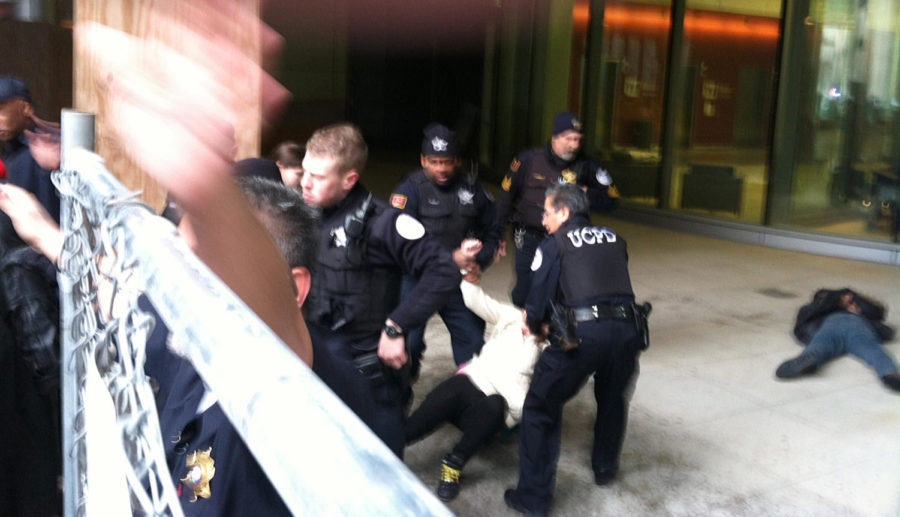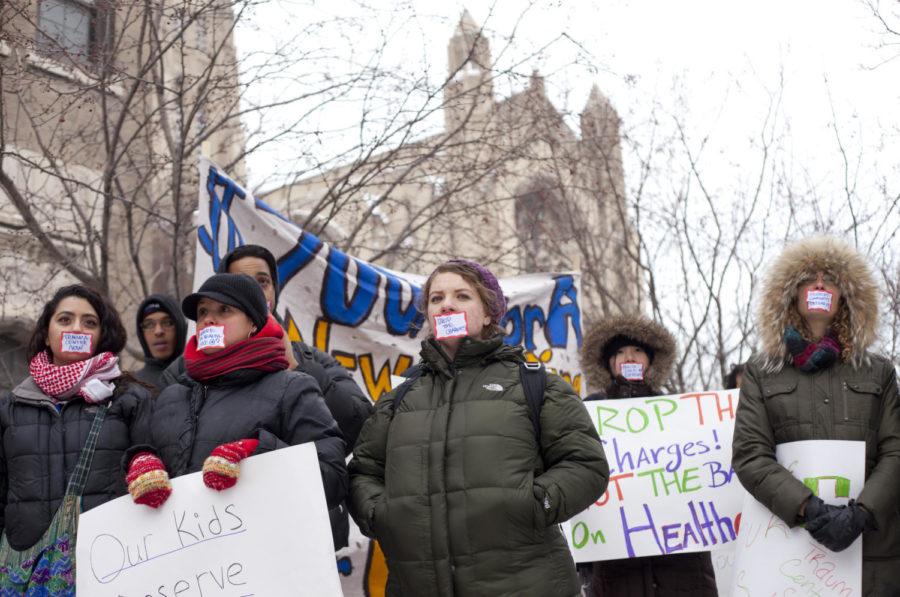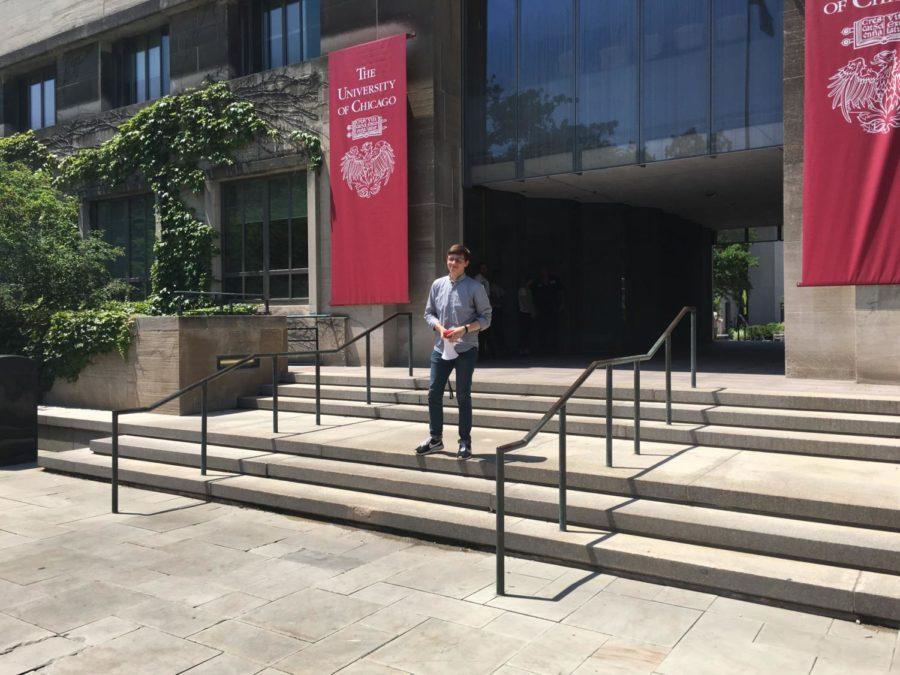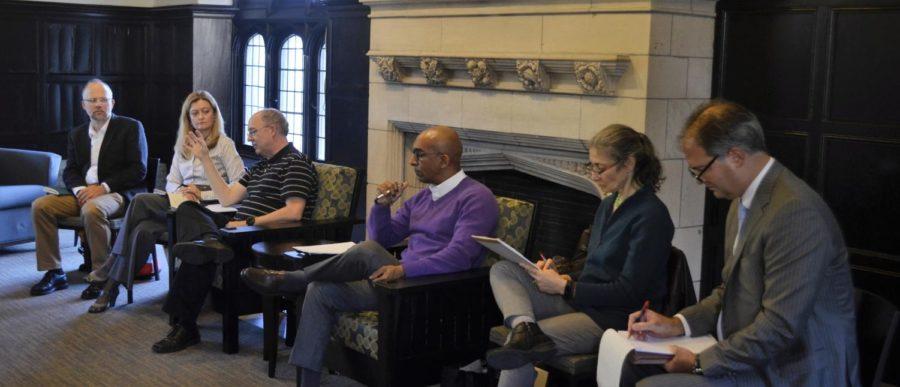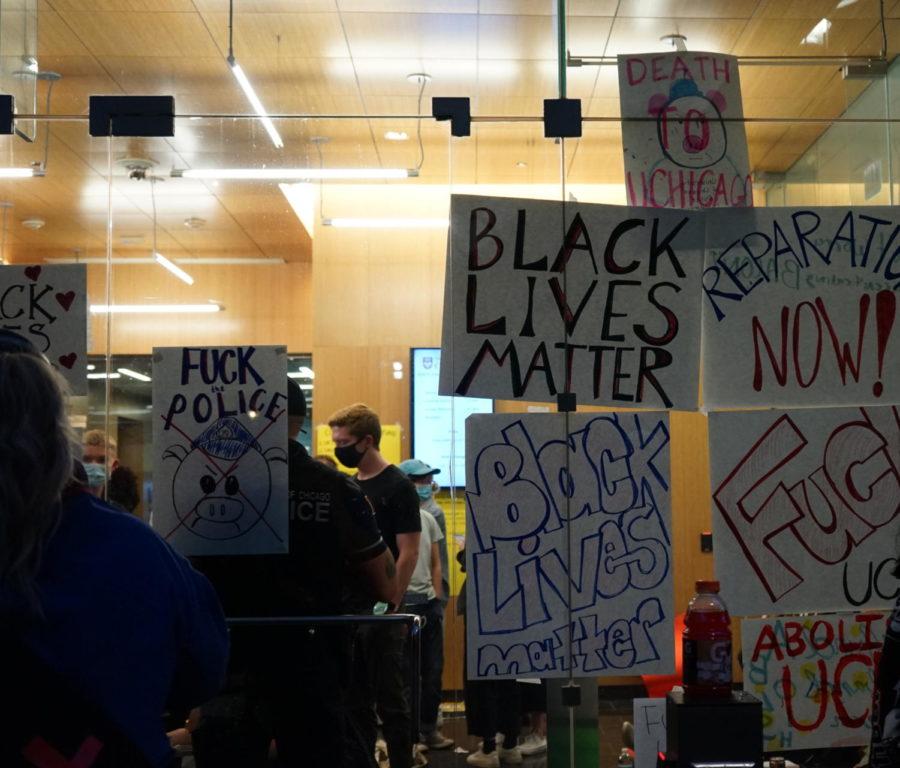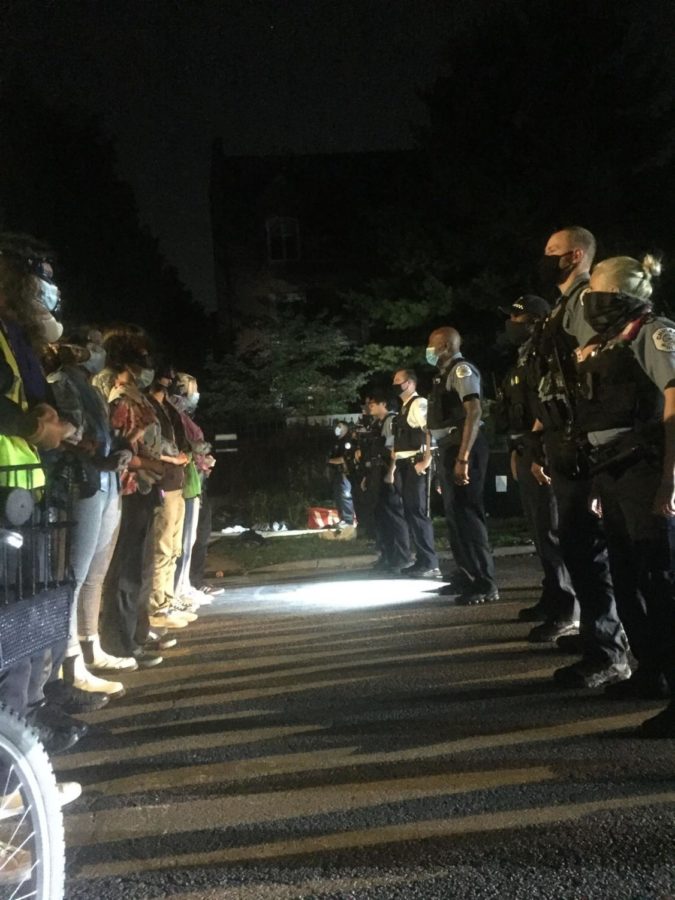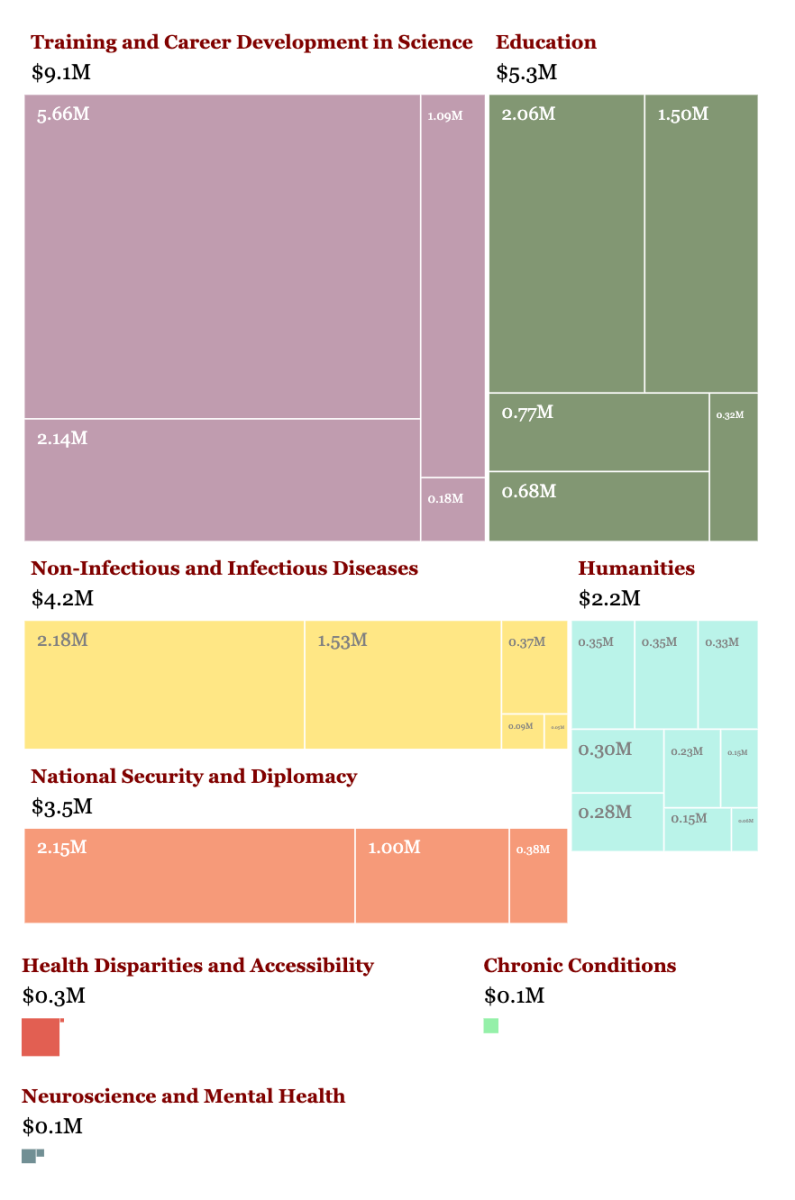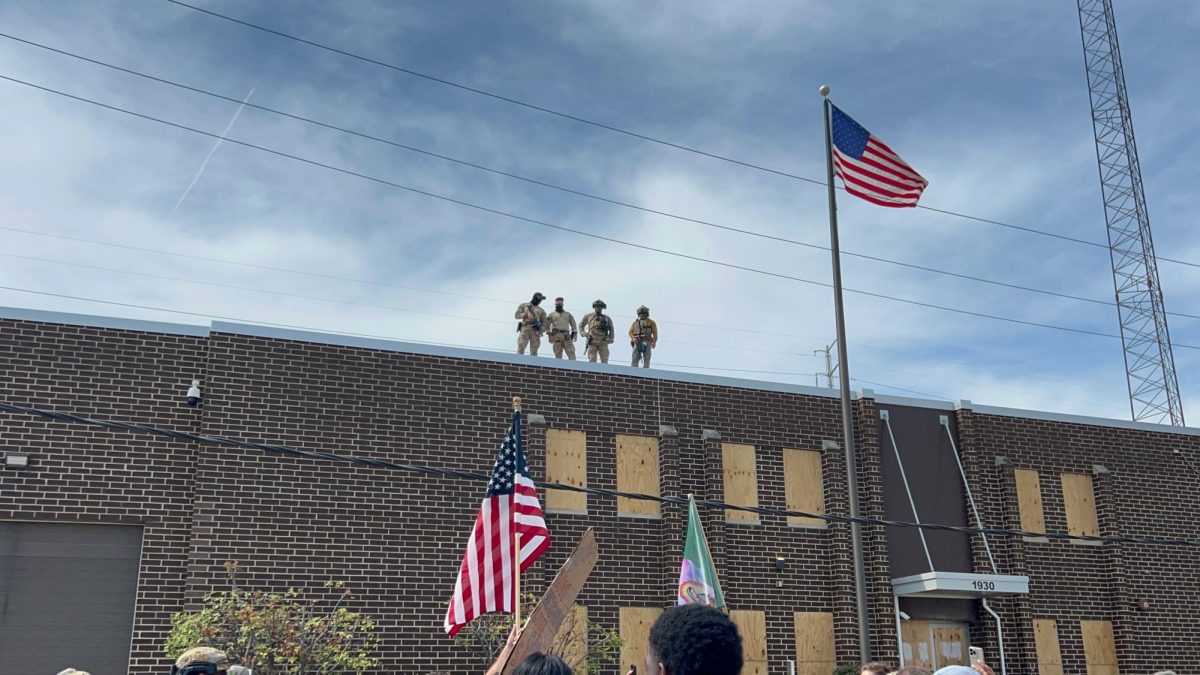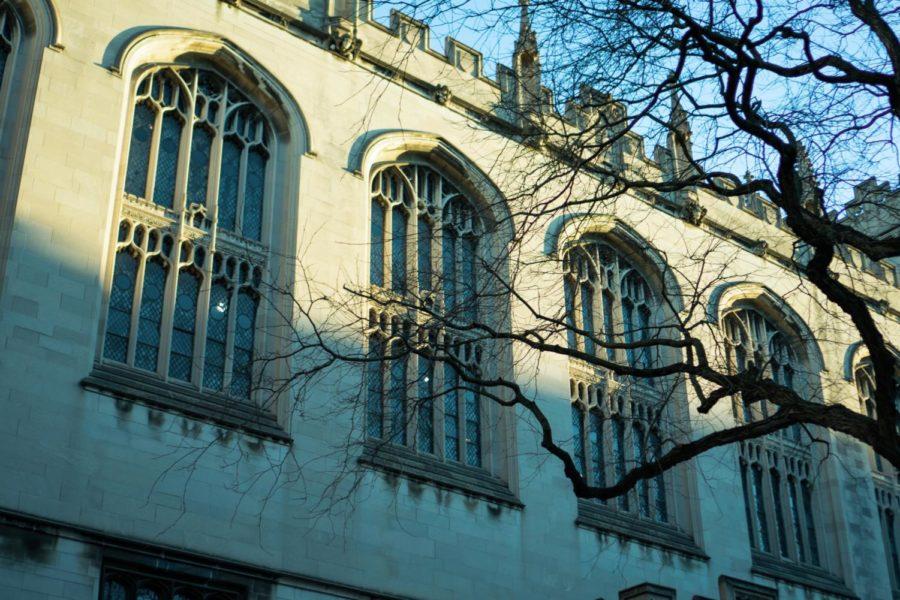Reworking a Decades-Old Disciplinary System


From 1974 to 2013, the All-University Disciplinary System—created to deal with many of the challenges that arose during the 1969 protests—was rarely used. Instead, disruptive conduct was largely handled within decentralized divisional disciplinary systems.
This was not for lack of protest on campus, however. Students widely protested the University’s refusal to divest from companies doing business with apartheid South Africa in the 1980s. Similar calls for divestment focused on the Sudanese government during a period of mass killings in the early 2000s. However, protesters in the post-Vietnam era intentionally de-escalated their demonstrations to be less disruptive, rendering the All-University system less useful.
“After a lot of talking back and forth… it was decided that we did not want to commit civil disobedience because we did not want to divide the community,” one former protest organizer told the Maroon in 2015, referencing the 1980s anti-apartheid movement on campus.
The lull in disruptive activity on campus ended with the death of a youth activist in 2010, when demonstrators began protesting the absence of an adult trauma unit at the University’s Center for Care and Discovery.
“There will be more actions; there will be more protests; there will be more direct actions. We’re not turned around by what happened [January 27],” a local South Side activist said in a February 2013 address to protesters outside of then University President Robert Zimmer’s house.
The University of Chicago Police Department (UCPD) and Chicago Police Department (CPD) arrested dozens of students and community activists over the following years as trauma center protests escalated.
UCPD’s conduct while handling the protests generated concerns of police overreach and called into question the management of disruptive conduct of protesters unaffiliated with the University.
As a result, in 2014 the University began a new process to reevaluate its protest and disruptive conduct policies. This process, which concluded in 2017, would ultimately result in the abolition of the All-University Disciplinary System in favor of a new Disciplinary System for Disruptive Conduct, which both removed any limitations on which University community members could file complaints and offered less transparency in its disciplinary processes.
This piece is the second in a three-part series on the history of protest and the disciplinary system at UChicago. It covers the period from 2010–20. Other articles cover 1967–74 and 2023 to the present day.
For nearly three decades, beginning in the early 1990s, the South Side had no Level I adult trauma centers—hospitals capable of providing specialized, 24-hour care to adults with traumatic injuries, such as those caused by serious car accidents or gunshots.
UChicago Medicine’s (UCMed) adult trauma center closed in 1988, and Bronzeville’s Michael Reese Hospital closed its center in 1991. To receive trauma care, South Siders needed to travel to Northwestern Memorial Hospital, 10 miles away.
The death of 18-year-old youth activist Damian Turner in 2010 gave rise to calls for a new Level I trauma center at UCMed. Turner was shot four blocks away from the hospital, but had to be transported to Northwestern Memorial for care and died en route. At the time, his mother told the Maroon that she believed that he may have survived if he had been able to receive more immediate care at UCMed.
An earlier WBEZ analysis found that South Siders had to travel 50 percent longer on average to receive trauma care. Later, a Northwestern University study would find that “Chicago-area gunshot victims who are shot more than five miles from a trauma center have a higher mortality rate.”
During a 2010 press conference organized by Turner’s mother, protesters read a letter delivered to UCMed spokesperson John Easton.
“At the same time as your hospital is embarking on a multi-million research pavilion to treat complex diseases and surgeries, there seem to be no plans to develop the resources to treat the hundreds of South Siders dying from gun violence,” the letter read.
UCMed broke ground on what would eventually become the Center for Care and Discovery in 2009. The new facility would “transform how we care for all patients, using leading-edge technology and innovative research to deliver advanced clinical treatments in a setting that offers a superior healing environment,” according to a 2012 press release.
At an estimated cost of $700 million, the Center would include units for cancer, gastrointestinal disease, neuroscience, high-technology radiology, and advanced surgery, using its expanded footprint and larger patient rooms—along with its proximity to University research divisions—to accommodate future developments in medical technology.
Notably, the Center did not include a Level I adult trauma center.
Following the 2010 conference, organizers with Southside Together Organizing for Power (STOP) and its youth affiliate, Fearless Leading by the Youth (FLY); University student group Students for Health Equity (SHE); and several other groups combined to form the Trauma Care Coalition (TCC).
In its early days, TCC used door-to-door canvassing and student outreach to build support for its campaign demanding UCMed establish a Level I adult trauma center on its campus. They also staged protests, which included “die-ins” and a mock-funeral during a 2011 Martin Luther King Jr. Day event. By 2013, the movement had taken a different tack—focusing on direct action against UCMed.
On January 27, 2013, several dozen demonstrators organized a sit-in during an invitation-only tour at the Center for Care and Discovery.
About 50 protesters entered the Center, announcing their intent to protest via a megaphone.
UCPD officers took out their batons and started shoving protesters toward the door, according to a Chicago Tribune report. Minutes later, CPD officers arrived. Several protesters said they were shoved to the ground after struggling with UCPD officers.
CPD officer Francis Frye explained that UCPD didn’t “have the expertise in dealing with crowds.”
“[UCPD] is finally getting a taste of what it means to be police,” Frye told the Maroon at the time.
According to a University statement, four protesters were arrested after demonstrators disregarded a UCPD request that they leave.
The Maroon identified the arrestees as Toussaint Losier, an eighth-year graduate student in UChicago’s history department; Victoria Crider, a 17-year-old student at King College Prep High School; Alex Goldenberg, the cameraman for STOP; and Jacob Klippenstein, a representative from the Anti-Eviction Campaign.
By the following week, an online petition calling on the University to explain police conduct at the protest had garnered more than 2,000 signatures. The petition claimed that police caused the only violence at the event, according to reporting from neighborhood news outlet DNAinfo. Specifically, members of STOP alleged that UCPD officers singled out Losier and beat him despite his lack of resistance.
Trial Proceedings for January Protesters
All four arrested individuals present at the January protest were held without charge in a CPD station overnight. The lawyer for the defendants told the Maroon at the time that CPD waited on UCPD to process the charges, resulting in delayed access to counsel for the defendants.
The three arrested adults—Losier, Klippenstein, and Goldenberg—went to trial in March 2013. All were charged with trespassing, and Losier was also charged with resisting arrest.
The trial took place at the District 2 CPD courthouse. Eight UChicago officials attended the trial, including five UCPD officers who Goldenberg and Losier claimed were at the protest.
At the start of the proceedings, the University offered each defendant a plea deal, which Losier refused.
“I was offered a one-year conditional discharge, which means it goes on my record. I was also offered [a no-contact order] with the University of Chicago…. Our lawyer went back and pushed them on it. They said I was a student and that doesn’t make any sense,” Losier told the Maroon.
The no-contact order would bar defendants from returning to the University and the site of many previous demonstrations. According to the defendants’ lawyer, Joey Mogul, the order would infringe on the defendants’ First Amendment right to continue protesting the lack of an adult Level I trauma center on the South Side.
On the second day of the trial, the three protesters accepted revised versions of the plea deals. Both Goldenberg and Klippenstein agreed to fewer than six months of supervision and signed a no–unlawful contact order with the University—allowing them to visit UCMed for medical care but no longer participate in disruptive protests on campus. The charges did not remain on their records. A judge sentenced Losier to a supervision period that lasted only a day.
“We took these deals mainly because we wanted to make sure that we had all the time and the resources available to us to really organize people,” Losier said in a video shared with the Maroon following the court decision.
UCPD Detective Goes Undercover
TCC would lead another protest on February 23, the day that the Center opened and patients were transferred into the building. Prior to the demonstration, which included a march around the facility ending at Zimmer’s home, organizers met with UCPD and University officials to ensure that the planned activities would not interfere with medical transportation while still allowing organizers to communicate their message.
During the demonstrations, then UCPD detective Janelle Marcellis went undercover in the crowd, actively participating in the protest while relaying information to a UCPD deputy chief. UCPD officers were stationed in plainclothes along the route and had been instructed to “blend in and get intel.”
A 2013 Maroon investigation obtained photographs of Marcellis’s cell phone, which revealed texts to Deputy Chief of Investigative Services Milton Owens reading, “In crowd w[ith] sign. All is well…. They are talking about wanting three things charges dropped trauma center and police to work [sic] […]” She carried a sign throughout the event and put a sticker on her mouth reading “trauma center now,” matching many other demonstrators.
When the investigation was published, then University Provost Thomas Rosenbaum released a statement condemning UCPD’s infiltration of the protest and indicating that it would be investigated.
“The behavior as described [in the Maroon] is antithetical to the University’s values and we will not tolerate it,” Rosenbaum wrote. “The University will investigate this expeditiously and take immediate steps to ensure it is not repeated.”
University Review of UCPD Conduct and Disciplinary Procedures
The University hired law firm Schiff Hardin LLP to conduct an external review of UCPD’s handling of the January 27 and February 23 protests and determine whether “University policies had been violated.” Two UCPD officers were put on leave pending that investigation, per the Chicagoist.
In line with the report’s recommendations, UCPD fired Owens, who was deemed responsible for the undercover operation, and began drafting a more comprehensive protest policy in line with “University values.” UCPD’s general orders, which govern officer conduct, now include a section specifically devoted to handling protests.
In 2018, Owens won a wrongful-termination lawsuit against the University after hearings revealed his initial skepticism of the use of plainclothes officers at the February 23 protest. Marcellis still works for UCPD as the deputy chief of patrol services.
The Schiff Hardin report also recommended a “review, assessment, and clarification of University and UCPD policies and protocols related to demonstrations and protests, including the role of the Dean on Call program… followed by appropriate training and education of all involved parties.”
Despite Owens’s initial firing and Schiff Hardin’s recommendations, activists did not believe that the University addressed all of their concerns about UCPD conduct.
“We are concerned that a few officers will be scapegoated and that the administration will not take responsibility for the implicit go-ahead they’ve given for these kinds of tactics,” SHE wrote in a statement following the announcement that an external review would take place. “The police spy was deployed in the context of [the] University[’s] disregard for community and student concerns, and for that reason is unsurprising.”
“The report is a whitewash of what took place,” Losier told the Maroon at the time. “It reads like a defense attorney’s closing argument.”
Ad-Hoc Committee on Protest and Dissent Recommends Change to University Protest Policy
In light of Schiff Hardin’s recommendations, Rosenbaum established the Ad Hoc Committee on Protest and Dissent (Strauss Committee), chaired by Gerald Ratner Distinguished Service Professor of Law David Strauss, to “review and make recommendations about practices and policies regarding dissent and protest on campus.”
“The environment of free expression on our campus, including the right to legitimate protest, is essential to our values and the nature of the university,” Zimmer said when the committee was announced.
Rosenbaum and the Strauss Committee held a public meeting on May 13, 2013 to reevaluate the University’s protest policies and to “review university policies on civil disobedience in the wake of questionable actions by U. of C. Police at two protests on campus,” DNAinfo wrote.
During the meeting, Strauss said the committee was focused on how, where, and when dissent and protest could be conducted on campus, as well as University-community relationships with regard to protests. Strauss also told attendees that the committee’s role was to make general recommendations and not to dictate policies regarding UCPD.
Some students and community activists, however, felt that the committee’s role should have placed more emphasis on reforming the University’s police force.
“We’ve missed a much broader conversation about what policies the UCPD has that led to the creation of this [undercover work],” Ava Benezra (A.B. ’15) said. “And in part that’s because it’s impossible to have a conversation about the policies of the UCPD, mostly because its policies aren’t public.”
Losier also announced that he planned to file a complaint with UCPD’s Independent Review Committee based on new video evidence that contradicted UCPD’s accusation that he resisted arrest. While it is unclear whether the complaint was ever filed, Losier was later rejected in his bid for a seat on UCPD’s Independent Review Committee.
In its final report, published in January 2014, the Strauss Committee wrote that the University’s policies should clarify the disciplinary measures that would be imposed for violations of University rules.
The committee recommended two changes to University Statute 21, which defines disruptive conduct.
It called for Statute 21 to incorporate the All-University Disciplinary System’s more specific definition of disruptive conduct, which includes obstruction of “University-sponsored or -authorized activities or facilities” and real or threatened use of force against University community members as examples of relevant misconduct.
It also recommended a narrower definition of disruptive conduct to allow for vocal protest.
“We note that the University’s statutes appear to provide that discipline can be imposed for ‘[c]onduct… disruptive of the operations of the University.’ Statute 21, Statutes of the University of Chicago (2013). This prohibition, taken literally, is too broad. Vocal protest, and demonstrations in particular, are by their nature disruptive to some degree.”
The statute was rewritten to include the more specific language in May 2014.
Despite the report’s conclusion that the All-University Disciplinary System “[had] not been used for decades and… should be re-evaluated,” no changes to its review processes or general application were made at the time.
On May 19, 2014, UCPD forcibly removed seven protesters, including three undergraduate students and two graduate students, from the construction site of a new UCMed parking garage. The protesters had barricaded an entrance to the site and bound themselves together with lockboxes made of PVC pipes, carabiners, and bungee cords. None of the protesters were arrested.
The next year, the University drafted a report in response to “recent events nationwide that [had] tested institutional commitments to free and open discourse.” The report established the Chicago Principles, connecting UChicago’s history of free expression to its commitment to “free, robust, and uninhibited debate and deliberation” among University community members.
Critics of the report have since argued that the Chicago Principles were written without consultation from students and faculty, do not go far enough in protecting the right to protest, and allow the University to avoid addressing community concerns in the name of institutional neutrality.
On June 3, 2015, protesters barricaded themselves inside Levi Hall’s south entrance vestibule and disabled the elevators until Zimmer—an ex officio member of UCMed’s board—agreed to meet with them to discuss constructing a Level I trauma center. Two hours later, members of the Chicago Fire Department broke through Levi’s drywall with axes, cut through a bike lock holding the doors closed with a power saw, and pried open windows with crowbars.
“They could have waited us out easily—instead, they called the fire department,” a protester who participated in the sit-in told the Maroon in 2025.
All protesters inside the building were arrested by CPD and UCPD. Many were banned from campus under the No Trespass (Ban) policy, which is applied to those that the University determines “has been or is threatening to be present on University property and who has engaged, or is reasonably likely to engage, in criminal activity, a violation of University policy, or conduct that is or may reasonably be deemed to be threatening, disruptive, or violent.”
In December 2015, the University initiated plans to add a Level I adult trauma center to UCMed’s campus, a project it would finally complete in 2018.
The next major event in the University’s disciplinary history came in 2016, when then Undergraduate Student Government President Tyler Kissinger (A.B. ’16) used his expanded building access to allow protesters into Levi Hall for a sit-in to “democratize” the University and raise the campus minimum wage, among other demands.
Kissinger and 33 other protesters briefly occupied the fifth floor of Levi Hall, where the provost’s office was located, before they were informed by an associate dean that they could face disciplinary action or arrest. All protesters then exited the building, which Kissinger described as being “kicked out.”
Kissinger told the New York Times that the University charged him with “premeditated and dishonest behavior to gain entry to Levi Hall, creating an unsafe situation” for which he was placed on probation but ultimately allowed to graduate.
No other students are listed in a 2015–16 disciplinary report as facing discipline related to the protest.
Following the sit-in, then Provost Eric Isaacs convened a Committee on University Discipline for Disruptive Conduct to “revise or replace the disciplinary procedures and standards set forth in the All-University Disciplinary System” as the 2014 Strauss Report had recommended.
The committee’s final report—the Picker Report—recommended the replacement of the All-University Disciplinary System with the Disciplinary System for Disruptive Conduct (DSDC) now in use and detailed several potential changes to the way the University handles protests, event disruptions, and related disciplinary cases.
“We put together a list of what we thought of were situations that might be within the ambit of this that occurred on campus in the past couple years. The truth is the people who were appointed—it is faculty members—we didn’t necessarily know anything about this,” Committee Chair Randal Picker told the Maroon in 2017. “I gotta say—we looked at the Maroon a lot,” Picker continued.
According to the committee’s charge, the existing All-University Disciplinary system’s “cumbersome procedures,” first implemented in 1970, made it “important that an improved system be developed and approved” to address disruptive conduct. Up to this point, most disciplinary cases had been handled by individual area disciplinary committees housed within each division, which the committee argued led to inconsistent results.
Disciplinary System for Disruptive Conduct
Picker told the Maroon in 2025 that the committee’s goal was “to design a set of rules such that students will know how to protest and can do so safely and not give rise to a potential punishment regime.”
Many of these changes were detailed in Appendix V of the report, which laid out specific plans for the construction of a new disciplinary system.
The committee’s recommendations stood in stark contrast to those implemented under the All-University Disciplinary system in three important ways.
While the 1970s procedures allowed for public hearings, under the new system disciplinary proceedings were intended to be private and confidential in line with the Family Educational Rights and Privacy Act (FERPA) of 1974.
“Although respondents, student witnesses and support persons are not bound by the federal law applicable to the University and its agents, they are encouraged to use good judgment when sharing information with third-parties, as some disclosures and related statements may give rise to legal claims against them by persons who believe that the disclosures or statements are false, invade privacy rights or cause reputational damage,” the report read.
The 1970s procedure also ignored students’ previous disciplinary records. The new Appendix V established a procedure that would notify the disciplinary committee of any prior Statute 21 violation allegations against a student facing the system.
Additionally, any member of the community could now initiate a complaint under the DSDC, leaving more of this responsibility to deans.
“In SJP–Israeli conflicts, I could see either side doing that,” Picker told the Maroon at the time.
The report also suggested the addition of free speech and disruptive conduct response training to the Deans-on-Call program, according to the Maroon.
“We wanted to make sure that we’ve got people, deans-on-call, with special free speech training to make sure that we vindicate the rights of speakers in free speech situations to make it possible for protesters to operate,” Picker said.
“Problems that arise in connection with protest activity [can] be handled with a minimum of police involvement,” the Picker Report argued. If UCPD did need to be called in for a protest, the Report recommended that the decision be made by “high-ranking University officials.”
Losier, who as a graduate student had access to the services deans-on-call provide, was never able to speak to a dean-on-call prior to or during his arrest in 2013, according to the Maroon.
Picker told the Maroon in 2025 that the committee did not consider the role of the University in legal proceedings in the event of intervention from outside forces such as CPD.
The committee originally proposed further revisions to Statute 21, suggesting that several moderately disruptive incidents caused by an individual could meet the bar of “substantial” disruption, and that groups of multiple individuals could together engage in disruptive conduct.
Students and Faculty Push Back
In response to the report’s plan for a new disciplinary system, a coalition of organizations—including UChicago’s chapter of the American Association of University Professors, Faculty Forward, Graduate Students United, and UChicago Students for Justice in Palestine—released a statement of concern calling on the Council of the Faculty Senate to vote against implementation of the Disciplinary System for Disruptive Conduct.
“The Picker Report sets out to punish forms of speech, rather than fostering expression, in particular expressions of dissent that previous reports have declared essential to the University’s mission,” the statement read. “This in contrast with the [Strauss Committee report], which is exemplary in emphasizing that ‘[d]issent and protest should be affirmatively welcomed, not merely tolerated, by the University.’”
Following the pushback, a revised version of the Picker report instead proposed the formation of a new committee in the following academic year charged with reconsidering Statute 21—the University’s definition of disruptive conduct.
A proposed revision of Statute 21 from a draft of the report was obtained by the Maroon. The bolded sections are proposed additions. The final report reverted back to the version of Statute 21 still in use today.
Disruptive conduct is conduct by an individual or by a group of individuals
member of the University communitythat substantially obstructs, impairs, or interferes with: (i) teaching, study, research, or administration of the University, including UCMC’s clinical mission; (ii) the authorized and other permissible use of University facilities, including meetings of University students, faculty, staff, administrators and/or guests; or (iii) the rights and privileges of other members of the University community. Substantiality may be judged based on a single incident or on an aggregation across incidents. Anyonemember of the Universitywho engages in disruptive conduct, whether individually or as part of a group, will be subject to disciplinary action. Disruptive conduct includes but is not limited to: (1) obstruction, impairment, or interference with University-sponsored or -authorized activities or facilities in a manner that is likely to or does deprive others of the benefit or enjoyment of the activity or facility and (2) use or threatened use of force against any member of the University community or his or her family that substantially and directly bears upon the member’s functions within the University.
“The rest of it, which is about free speech on calls and design that’s in the Report, the [faculty] council did not vote on that. That wasn’t something that the statutes required,” Picker said in 2025.
The report also suggested that “when appropriate, unaffiliated individuals who engage in disruptive conduct can be barred from all or part of the University permanently or for discrete periods under standards and processes set forth in the University’s No-Trespass (Ban) Policy.”
“The committee met with many people,” Picker said in 2025, recalling one area on which it received pushback. “I think there are some people who would have liked for there not to be the possibility of expulsion for engaging in disruptive conduct,” he said.
The new DSDC included a provision requiring a review in spring 2020. A review was conducted, according to Anthony Casey, the chair of the 2025 review committee, but he said there were few incidents the new system had been used to address by the time of the review and there was consequently little to assess.
Casey said he did not have documentation of the 2020 review—which he was not involved in—and the Maroon was not able to locate any formal record of it.
Many UChicago student organizations supported the wave of national protests sparked by the 2020 murder of George Floyd by Minneapolis police officer Derek Chauvin, demanding that the University abolish its private police force.
In June, protesters affiliated with several campus activist groups, including #CareNotCops, UChicago United, and Students Working Against Prisons, staged an overnight sit-in at UCPD’s headquarters. Protesters demanded a public, in-person meeting with then University Provost Ka Yee Lee and former UCPD Chief of Police Kenton Rainey; a 50 percent reduction in UCPD’s budget for the 2020–21 school year; and the eventual abolition of the force.
Protesters were allowed to leave the building during the entirety of the protest, which lasted until about 10:30 a.m. the following morning. The building’s bathrooms, however, were locked, and protesters were unable to get food into the building after 5 p.m. Although Rainey and Lee agreed to a meeting, it is unclear whether it ever took place.
With their demands from June still unmet, protesters with the #CareNotCops campaign occupied the block outside of Lee’s home beginning in late August to again demand that she disband UCPD and create cultural centers and an ethnic studies department on campus.
Over the course of several days, protesters erected tents and barriers on the sidewalk despite multiple police orders to disperse. Protesters also spray-painted messages on the sidewalk outside of Lee’s house in English and Chinese that some on social media condemned as anti-Asian racism.
In a statement published during the protests, Lee expressed her willingness to meet with protesters but condemned many of their tactics.
“Unfortunately, the actions that are currently taking place on my doorstep go beyond any civil bounds,” she wrote. “In addition to engaging in unlawful residential picketing for three days, protestors have harassed and directed personal attacks and vulgar language at my family members and me, verbally and in writing, and blocked traffic for community members on my block. They have spray painted offensive messages in both English and Chinese on my street and outside my home.”
Despite the University’s efforts to completely overhaul its disciplinary system and better handle disruptive conduct, no students were disciplined for their actions at either protest.
This piece was produced by the Maroon’s Investigations team, whose members are Celeste Alcalay, Evgenia Anastasakos, Elena Eisenstadt, Gabriel Kraemer, Zachary Leiter, Tiffany Li, and Nathaniel Rodwell-Simon.
Your support will ensure that we can continue producing powerful, honest, and accessible reporting that serves the University of Chicago and Hyde Park communities.




